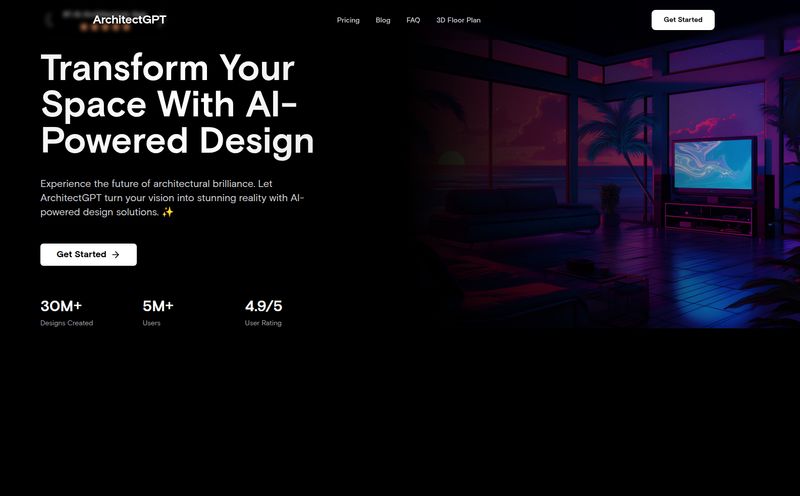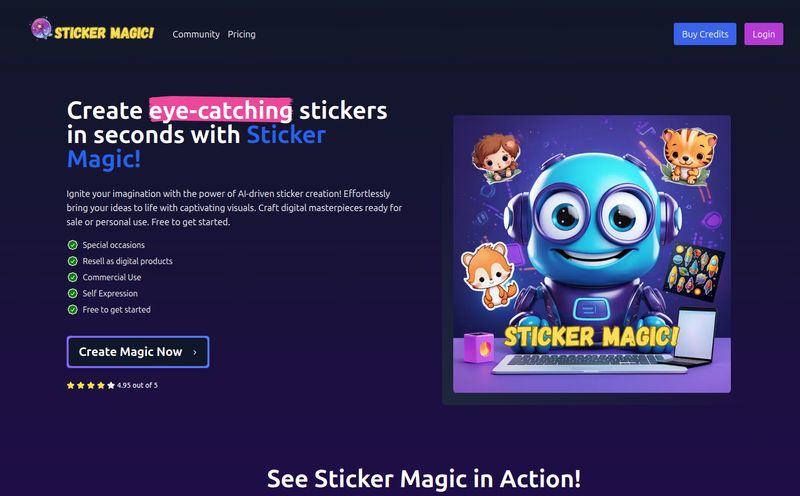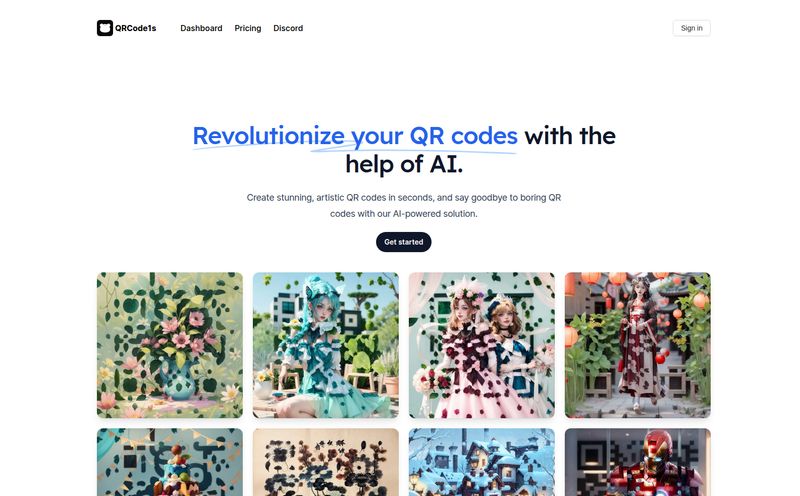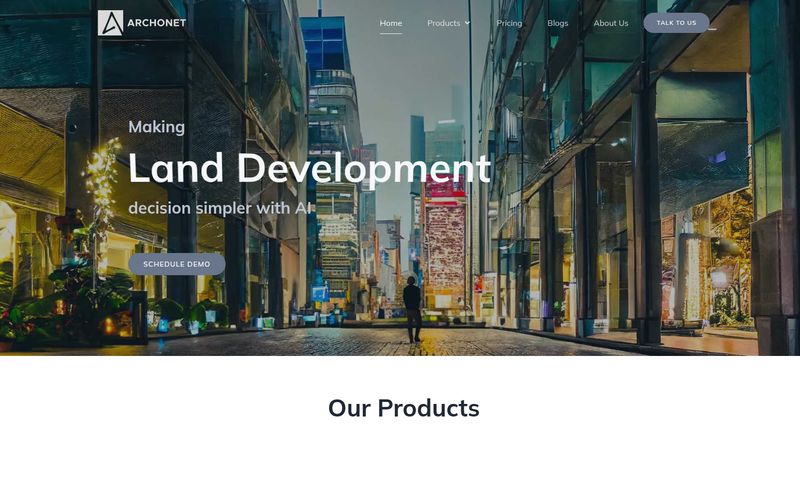Remember the old days of making a mood board? I sure do. It involved an unholy amount of tabs open, a Pinterest board so chaotic it looked like a digital yard sale, and a wrestling match with Photoshop or Canva that left you feeling... defeated. You'd spend hours painstakingly cutting out furniture, fighting with layers, and trying to find products that actually existed in the real world. It was a whole thing.
So, when I first heard about MoodBoardly, an AI-powered mood board creator, my inner skeptic raised a well-groomed eyebrow. Another AI tool promising to solve all my problems? Sure. But as someone who lives and breathes design trends and traffic generation, I had to see for myself. And honestly? I’m kind of annoyed I didn’t have this years ago.
So, What Exactly is MoodBoardly?
In short, MoodBoardly is an online platform designed to take the grunt work out of creating mood boards. Whether you're an interior designer mapping out a client's living room, a bride-to-be planning your wedding aesthetic, or just someone who wants to finally visualize that dream home office, this tool is built for you. It's not just a blank canvas; it’s an intelligent assistant.
The whole system is built on a “3 in 1” concept that combines a few powerful tools: Mood Board AI, a flexible Board Editor, and something they call MyRoomDesigner.AI. Instead of buying three separate pieces of software, you get a cohesive little ecosystem for your design journey. It’s pretty slick.
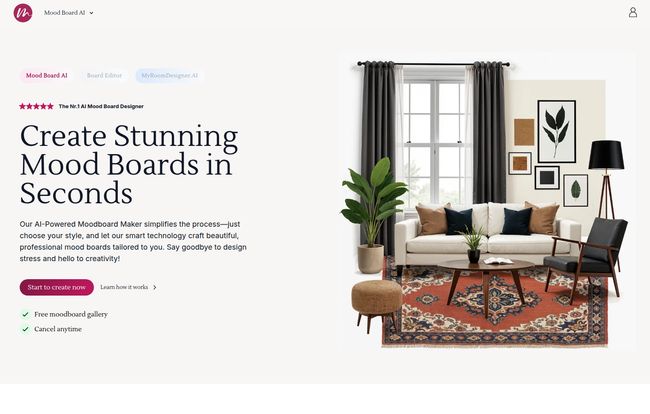
Visit MoodBoardly
More Than Just a Pretty Board: A Look at the Core Features
This is where things get interesting. A tool is only as good as its features, and MoodBoardly has a few that genuinely made me sit up and pay attention.
The Magic Wand: Mood Board AI
This is the headline act. You start with a vision. You type in a prompt, something like, “a cozy, mid-century modern living room with earthy tones, a leather sofa, and lots of natural light.” You choose a style, add some custom details, and… boom. The AI generates a visual starting point. It’s not always 100% perfect on the first try—let’s be realistic, what AI is?—but it gives you a fantastic foundation to build upon. It's like having a junior designer who does the initial brainstorming for you, freeing you up for the creative direction.
The Control Freak's Dream: The Board Editor
Once the AI has done its thing, you jump into the Board Editor. This is your playground. You can tweak, replace, and reposition everything. The feature that got me, though? The AI Background Remover. Anyone who has ever spent 20 minutes meticulously tracing the outline of a chair in Photoshop knows the soul-crushing pain I’m talking about. Here, it’s a click. One click. You can also easily import products from any website, which is a massive time-saver. No more screenshotting and cropping for hours on end.
The 'Whoa' Moment: MyRoomDesigner.AI
This part feels a little like science fiction. You can take your 2D mood board and transform it into a 3D room design. It helps you and your clients (or your very patient spouse) visualize the space in a much more tangible way. It’s one thing to see a flat collage of items; it’s another to see them in a simulated room. This is a feature that really separates MoodBoardly from a simple collage maker.
The Unsung Hero: The Automated Shopping List
I love this. As you build your board with real products, MoodBoardly automatically creates a shopping list, tracking items and costs. This is the crucial bridge between inspiration and execution. It’s easy to get carried away and design a million-dollar room on a thousand-dollar budget. This feature keeps you grounded in reality, which is something I deeply, deeply appreciate. It turns a pretty picture into an actionable plan.
Who is This Tool Actually For?
While the marketing leans heavily into interior design, I can see this being a killer tool for a bunch of people. Professional interior designers are the obvious audience, and it could seriously streamline their client presentations. But wedding planners could use it for event aesthetics, fashion students for collection concepts, and even content creators for brand visuals. And of course, there’s the passionate home decorator—the person who spends their weekends dreaming up a new look for the guest bedroom. If you’re a visual planner of any kind, this is likely in your wheelhouse.
Let's Talk Money: MoodBoardly Pricing Breakdown
Alright, the all-important question: what’s the damage? The pricing structure is tiered, which is pretty standard for SaaS platforms. I’ve always felt that a good free plan is a sign of a confident company, and they do offer one.
| Plan | Price | Best For |
|---|---|---|
| Free | $0 / Month | Dipping your toes in. You get 1 board a month and very limited AI features, but enough to see how it works. |
| Personal | $15 / Month (Billed Yearly) | Serious hobbyists or freelancers. This tier unlocks the AI generations and gives you way more boards and import capacity. |
| Business | $39 / Month (Billed Yearly) | Small design studios or professionals handling multiple client projects at once. |
| Premium | $75 / Month (Billed Yearly) | Power users and larger agencies who need a high volume of everything. |
In my opinion, the Personal plan hits the sweet spot for most people. It gives you enough AI juice (50 generations/month) to really play and be productive without breaking the bank. The free plan is great for a test drive, but you'll hit a wall pretty quickly if you're working on a real project.
The Real Talk: What I Actually Think
So, here’s the bottom line. I went in skeptical, and I came out impressed. The workflow is genuinely smooth. The ability to go from a vague idea, to an AI-generated concept, to a customized board, and finally to a shoppable list is a really powerfull and cohesive process.
But it's not perfect. The main drawback is that the best features—the AI generations—are locked behind a paywall. And they make it clear that refunds aren’t offered for AI generations because of the server costs involved, which is understandable but something to be aware of. You have to be thoughtful with your prompts. This isn’t an “undo” button you can just spam. You're using up a finite resource with each generation.
Is it better than just using Pinterest? For creating an actionable design plan, yes. A thousand times yes. Pinterest is for gathering inspiration; MoodBoardly is for organizing that inspiration into a concrete project.
Frequently Asked Questions About MoodBoardly
- Are the AI features really free?
- Not really. The core AI generation tools require a paid plan. The free plan gives you a taste with things like the color palette generator and one background removal, but the main AI mood board creation is a premium feature.
- Can I import my own images and products?
- Yes! The Board Editor lets you upload your own images, and the one-click product import lets you pull items from retailer websites, which is incredibly handy.
- Is it difficult to use?
- I found it surprisingly intuitive. If you've ever used a tool like Canva, you'll feel right at home. The interface is clean, and there isn't a steep learning curve.
- What happens if I cancel my subscription?
- As with most SaaS tools, you'd likely lose access to the premium features and the boards you created once the billing period ends. It's always a good idea to export or save your finished work.
- Is it worth the monthly cost?
- If you're a professional, the time it saves you could easily justify the cost. For a hobbyist, it depends on how much you value a streamlined, powerful tool for your creative projects. I'd say try the free plan and see if you get hooked.
My Final Verdict
MoodBoardly isn't just another flashy AI toy. It’s a genuinely useful tool that solves a real, often tedious, problem. It successfully bridges the gap between the beautiful chaos of inspiration and the structured reality of a finished project. It takes the most annoying parts of creating a mood board and automates them, letting you focus on the fun part: the design itself.
If you're a designer looking to speed up your workflow or a home decor enthusiast who wants to bring your visions to life without tearing your hair out, I think it's absolutely worth a look. It might just be the creative assistant you didn't know you needed.
References and Sources
- MoodBoardly Official Pricing Page
- Apartment Therapy - The 8 Best Apps & Websites for Making a Mood Board
